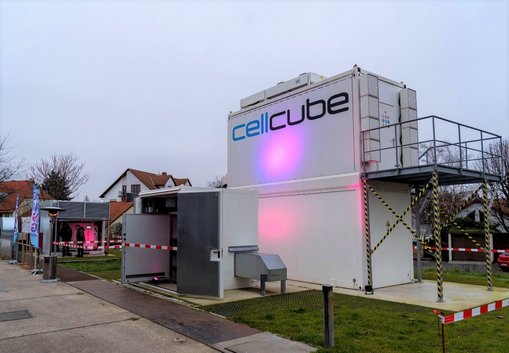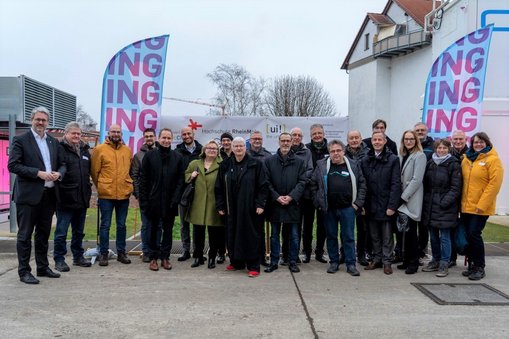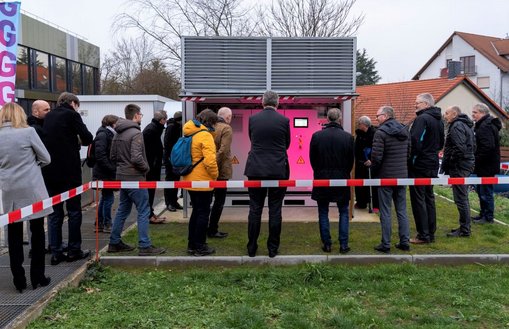LATEST NEWS
New energy storage system at Rüsselsheim Campus
Since 2018, researchers from RheinMain University of Applied Sciences (HSRM) have been working on the project "Clever! Electric City Rüsselsheim" supporting the development of a comprehensive, needs-based and sustainable low-energy charging infrastructure for electric vehicles in Rüsselsheim am Main.
This week, the project reached a milestone with the launch of two energy storage units at the Rüsselsheim Campus. In the future, the energy storage units will allow scientists to investigate the advantages and disadvantages of two different battery technologies and, together with their cooperation partners (city of Rüsselsheim am Main, Opel Automobile GmbH, gewobau Rüsselsheim and urban mobility innovations), to research the most efficient operating mode of the storage units for the use of green electricity and the stabilization of the grid, as well as to develop concrete applications.
The storage system, consisting of a lithium-ion storage unit (625 kWh) and a redox flow storage unit (425 kWh), was funded by the German Federal Ministry for Economic Affairs and Climate Action with EUR 1.58 million as part of the immediate action program "Clean Air 2017-2020". The total funding volume amounts to EUR 3.22 million. The research project based at HSRM is conducted by a team of four professors from the fields of Electrical Engineering, Applied Physics and the Faculty of Architecture and Civil Engineering, as well as six research assistants. In addition to evaluating grid voltages and currents during charging processes, the research project also includes an accompanying survey on mobility behavior and perceptions of electric mobility in Rüsselsheim, Wiesbaden and the surrounding area.
Climate action through emission-free individual mobility
Professor Eva Waller, President of HSRM, welcomed the guests to the launch of the energy storage units at the Rüsselsheim Campus: "I am very pleased that we were able to install the last missing component today necessary to optimize the system of charging stations and power grid. As a university of applied sciences, we place particular emphasis on creating added value for society with our practice-oriented research. Through the project “Clever! Electric City Rüsselsheim”, the citizens of Rüsselsheim can benefit directly from forward-thinking, applied research and at the same time make their own contribution to climate protection in their city."
"As mayor of the city, I am very pleased that this practice-oriented lighthouse project with trans-regional appeal has been brought to fruition here at the campus in Rüsselsheim. The launch of the energy storage units is not only another milestone in the project “Clever! Electric City Rüsselsheim”, but also an example of future-oriented, sustainable developments in close cooperation with the city, research and education. Thank you, RheinMain University of Applied Sciences," said Udo Bausch, Mayor of Rüsselsheim am Main.
Professor Birgit Scheppat then gave an overview of the project. "Both storage systems can balance out high demand charging situations, for example when several vehicles are charged simultaneously. There are no bottlenecks in the grid and the proportion of renewable electricity is optimized," Professor Scheppat said, explaining the advantages of the new energy storage units. "We will also investigate the aging process of the storage units and their use as grid support and conduct long-term charging trials with electric vehicles," she said, giving a glimpse into the future of the research project.
Professor Matthias Kowald then presented the results of the mobility survey; Professor Volker Pitz provided insights into grid research; and Professor Wilfried Attenberger explained how storage units work. At the end of the event, the participants had the opportunity to visit the energy storage units in small groups and to discuss storage technologies.


